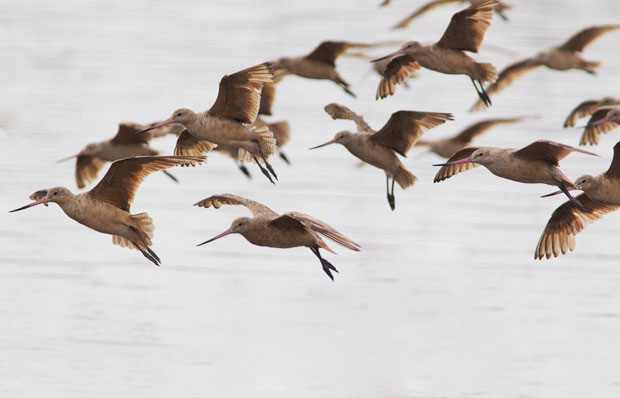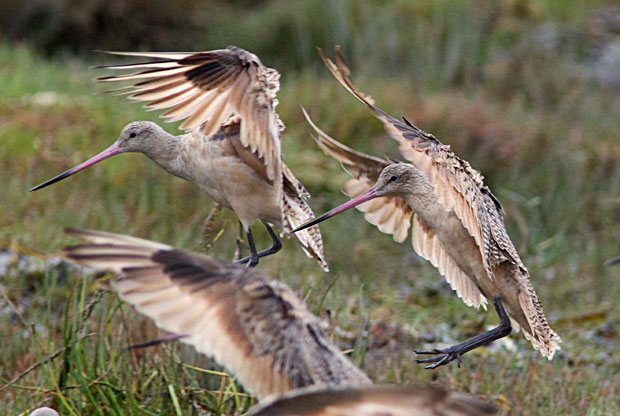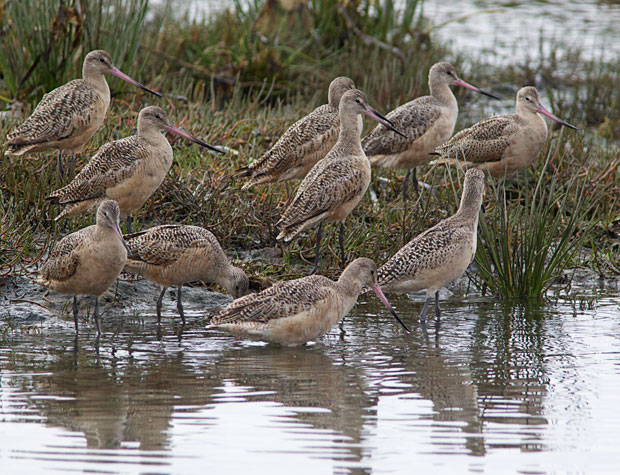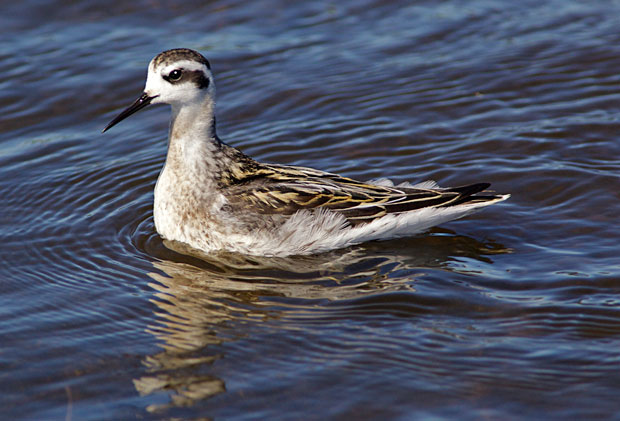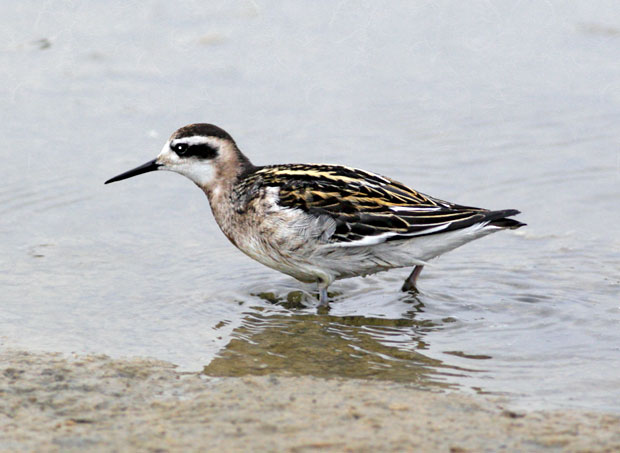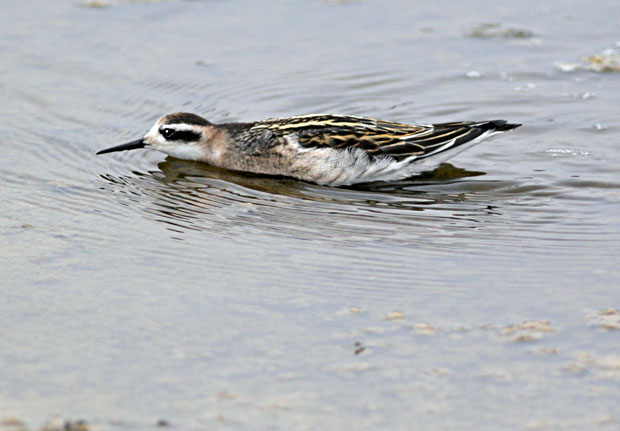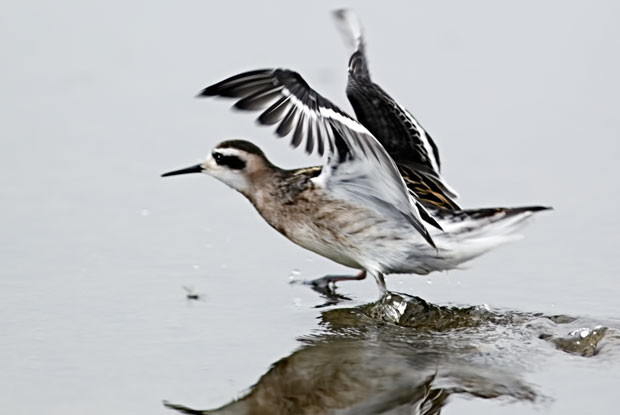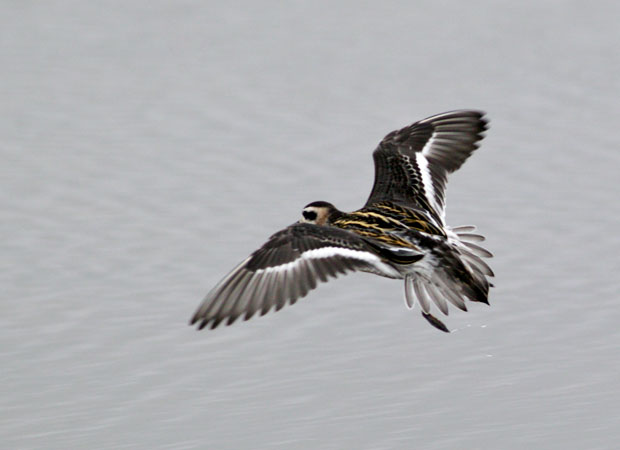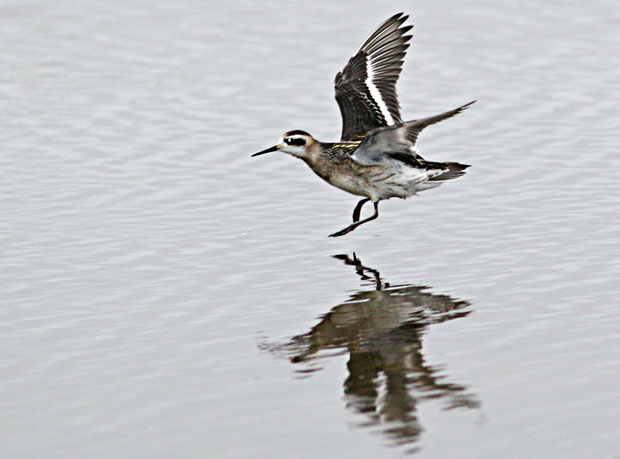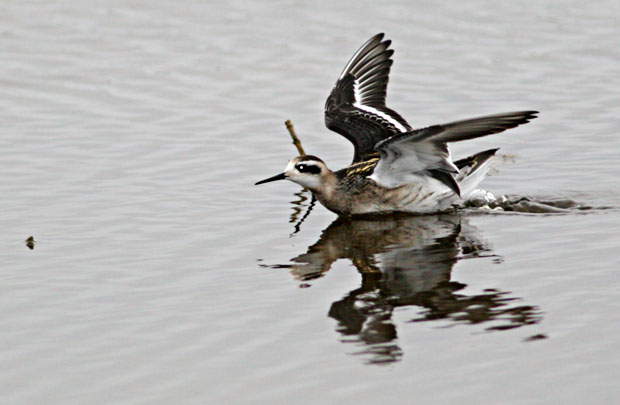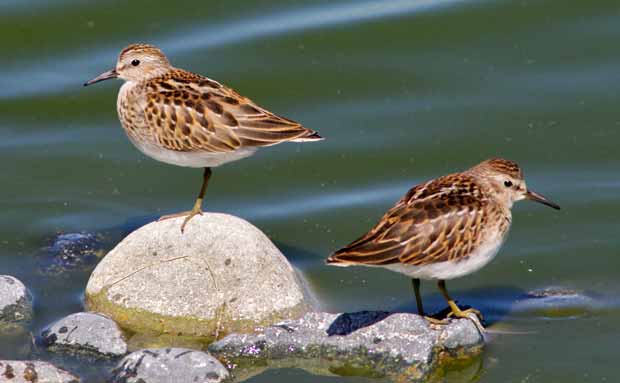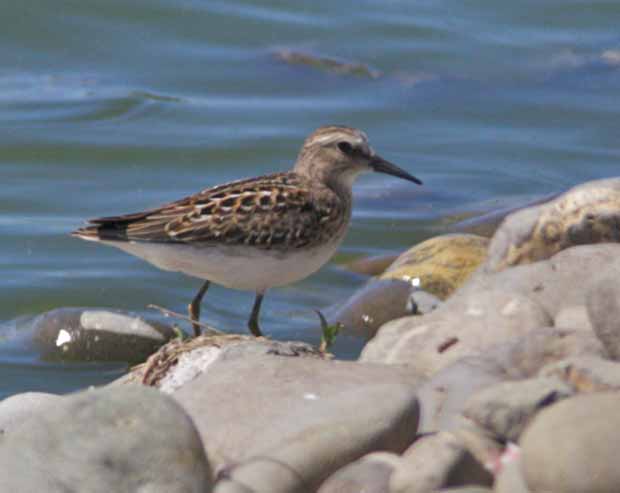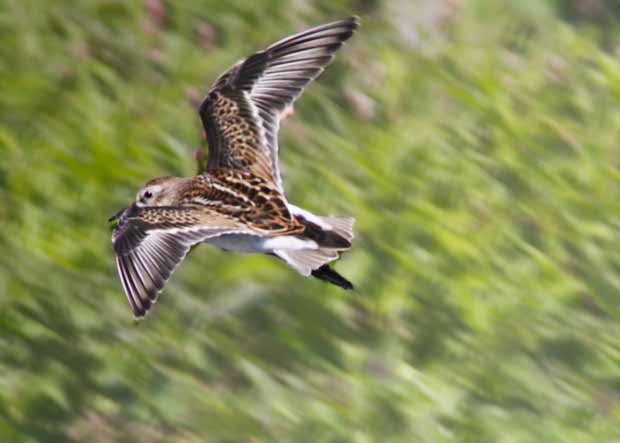One of the goals of a recent ocean trip was to find a Pectoral Sandpiper, a seldom seen species around here, one I’d certainly never seen. I’ll have to admit, though, that was probably the other birders’ goal more than mine. It’s the experience that most interests me, not finding a particular bird, even a rare bird.
So while my birding friends were looking through their scopes trying to locate a Pectoral Sandpiper, I walked around the wetland ponds to photograph a number of common shore birds foraging in the wetlands.
While taking pictures of Sanderlings and Western Sandpipers, I noticed a sandpiper that seemed huge compared to the other birds I was photographing.
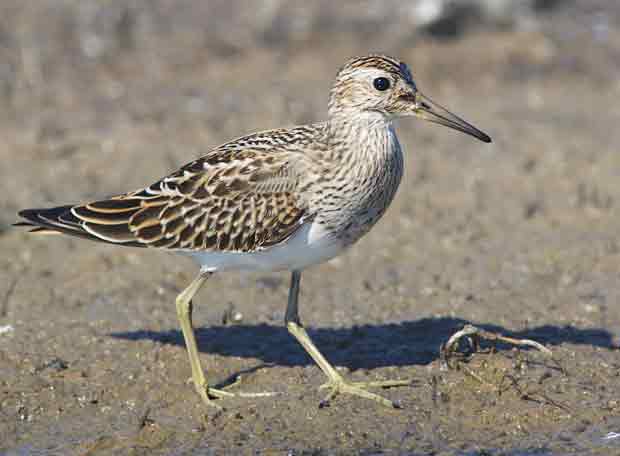
Turns out that I had accidentally discovered the Pectoral Sandpiper everyone was looking for in the distance, even though all I knew was that it was a bird I’d never seen before.
I was drawn to it because of its size and its behavior. Not only was it twice as large as most of the shorebirds, but it was also much more aggressive, driving off other sandpipers that came too close. If I’d seen it in the distance, I might have mistaken if for a yellowlegs, because its behavior seemed somewhat similar,
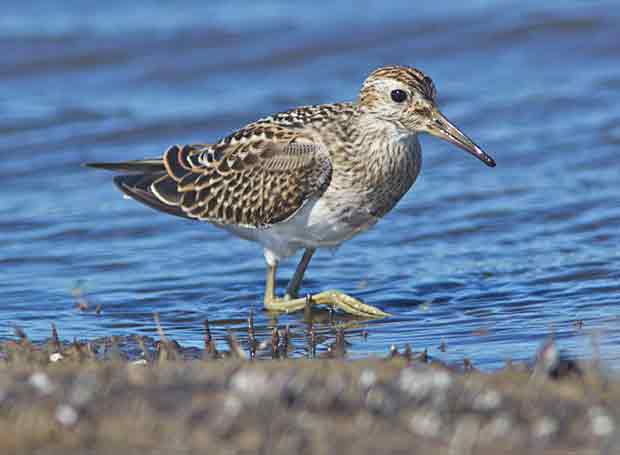
though its bill was much shorter, as were its legs.
I must have spent nearly an hour watching the three birds I found, photographing it in various poses,
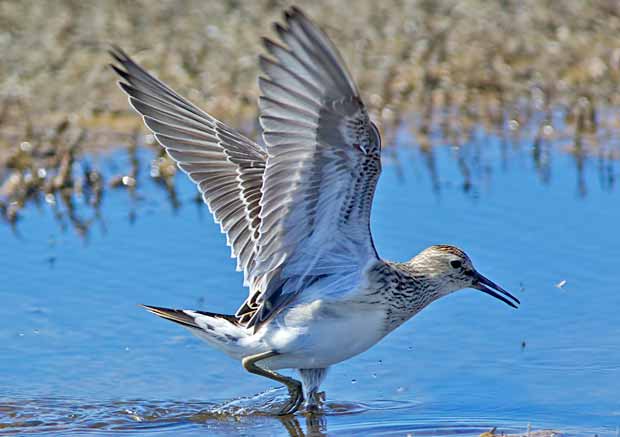
though most of the time was spent probing the sand and water for food, making it difficult to get a better shot than the one I began this entry with.
It’s hard not to be awed by the amazing variety of birds once you start looking closely at them. I’ve been birding, seriously, or not so seriously, for about three years now and I still can’t go out birding for very long without seeing a species I’ve never seen before.
Like this:
Like Loading...
